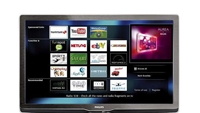Americans now view the Internet video as much as television

Americans — old as well as young — are now spending as much time using the Internet as they are watching television, says new research from Forrester Research. There’s also a significant increase in online video viewing.
The amount of time people spend on the Internet has increased 121 percent over the last five years, said the report. While people younger than 30 years old dominated the Internet for years, now older age groups are using it more. The time now ranges from about 12 hours for adults under 30 to about eight hours for people over 66 years old.
Forrester’s survey shows a significant increase in the number of people using the Internet to watch streaming video. Thirty-three percent of adults surveyed this year said they use the Internet to watch video, up from 18 percent in 2007.
However, the amount of time people spend with their televisions remained relatively stable. This was in contrast to results showing people are spending significantly less time listening to the offline versions of radio and reading printed newspapers and magazines.
The rise of the Internet is not necessarily leading to a drop in traditional television consumption. It simply creates more opportunities for people to consume media, Jacqueline Anderson, an analyst at Forrester who wrote the report, told the “New York Times.”
The report did not specifically address the trend of cord cutting, whereby cable subscribers transition from watching cable channels to streaming online video. Pay TV subscriptions in the United States are down this year, though the reasons why are in dispute.
The survey did not deal directly with the question of whether people who watch streaming video on their televisions consider themselves to be watching TV or using the Internet. So some television replacement could be hidden behind this ambiguity, if people who are watching Internet content through set-top boxes or Internet-connected televisions see that as television use.
The professional video industry's #1 source for news, trends and product and tech information. Sign up below.
Such activity and ambiguity poses a significant threat to the existing business model to broadcast, cable and satellite television providers.
The report found that younger viewers are increasingly comfortable with the Internet as the place to watch their television. “For the younger population, the TV is still important, but where they’re getting that content from is changing,” Anderson said. “For the generations that are coming up, that’s where we’re going to see the cut.”
